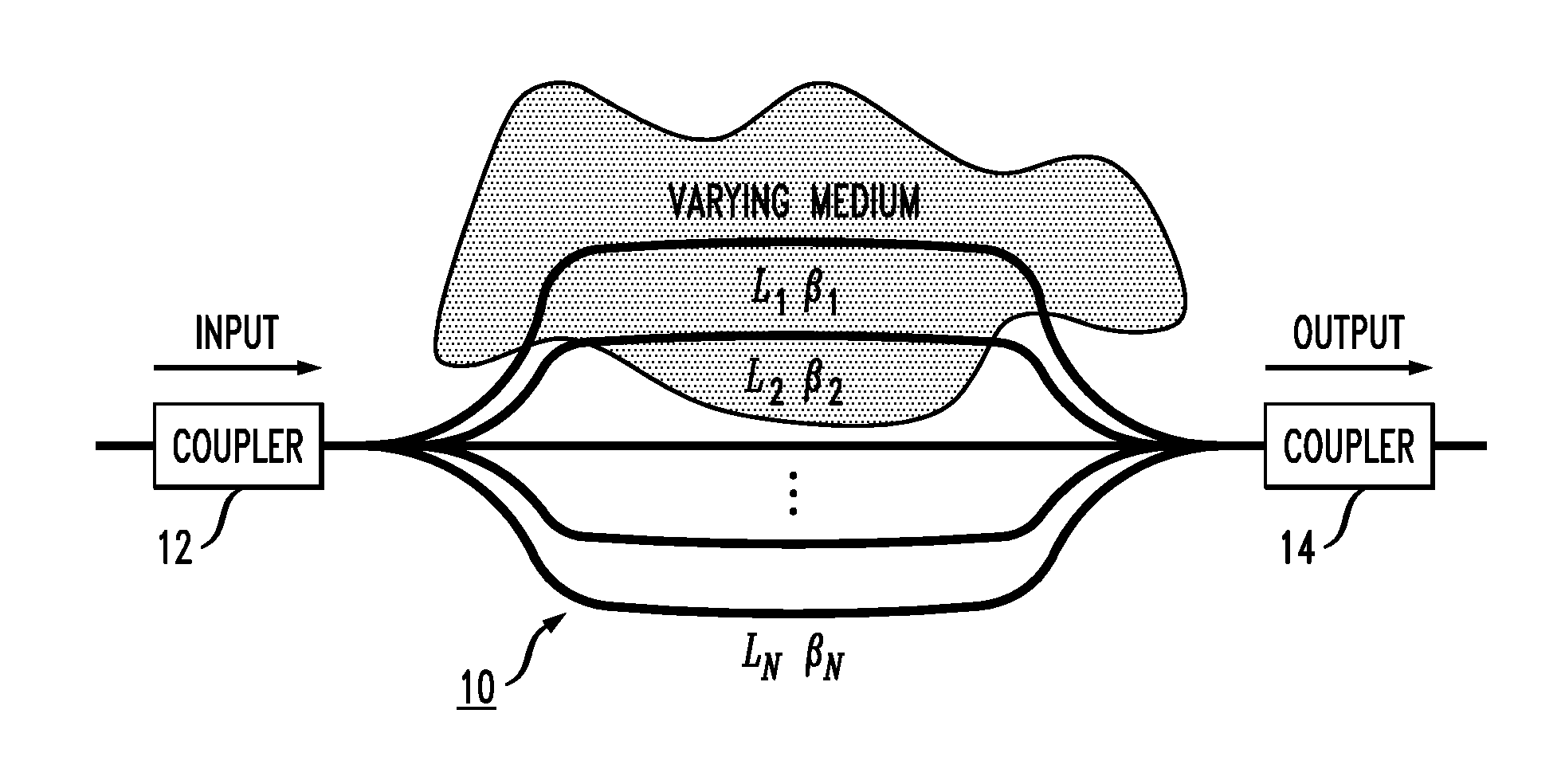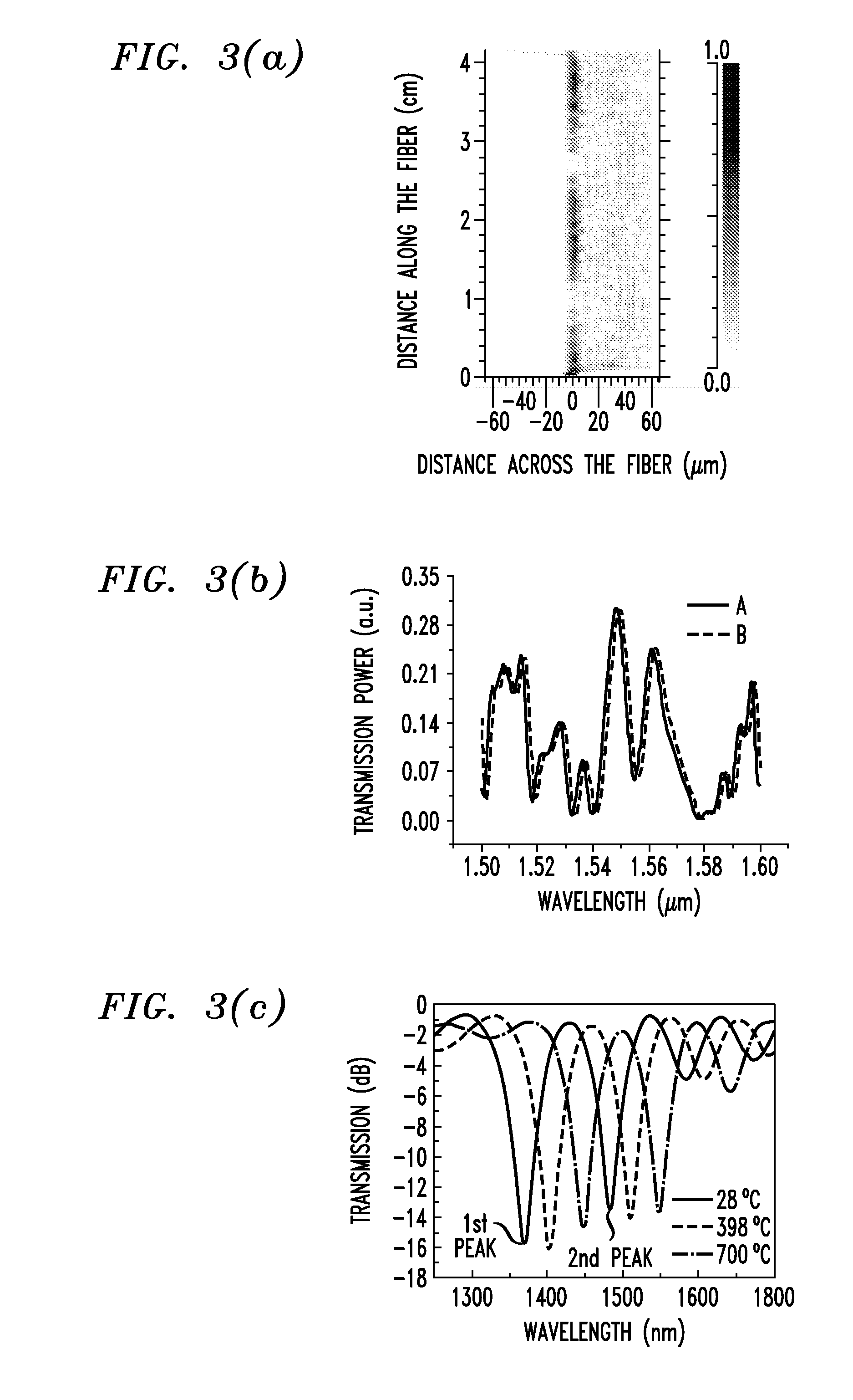Coiled Evanescent Optical Sensor
a technology of optical sensors and evanescent light, applied in the field of evanescent light, can solve the problems of increasing the overall physical size of the sensor, the loss of devices, and the spatial delocalization of the measuremen
- Summary
- Abstract
- Description
- Claims
- Application Information
AI Technical Summary
Benefits of technology
Problems solved by technology
Method used
Image
Examples
Embodiment Construction
[0020]An evanescent optical sensor useful for analyzing various parameters of the ambient environment (e.g., temperature, pressure, acoustic, refractive index, etc.) is formed from a coiled configuration of an optical fiber or microfiber. For the purposes of the present invention, the term “microfiber” is defined as a fiber with a diameter on the order of one micron (or less than / or on the order of the wavelength of an optical signal propagating through the fiber). It is contemplated that the coiled sensor of the present invention may be constructed of either conventional optical fiber (having a diameter on the order of ten to a hundred microns) or microfiber, where differences in sensitivity of various embodiments can be attributed, in part, to the selection of either fiber or microfiber.
[0021]FIG. 1 illustrates an exemplary coil 10 that may be used to form the evanescent optical sensor of the present invention. Coil 10 may be formed of either optical fiber or microfiber and is def...
PUM
 Login to View More
Login to View More Abstract
Description
Claims
Application Information
 Login to View More
Login to View More - R&D
- Intellectual Property
- Life Sciences
- Materials
- Tech Scout
- Unparalleled Data Quality
- Higher Quality Content
- 60% Fewer Hallucinations
Browse by: Latest US Patents, China's latest patents, Technical Efficacy Thesaurus, Application Domain, Technology Topic, Popular Technical Reports.
© 2025 PatSnap. All rights reserved.Legal|Privacy policy|Modern Slavery Act Transparency Statement|Sitemap|About US| Contact US: help@patsnap.com



